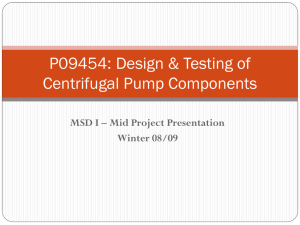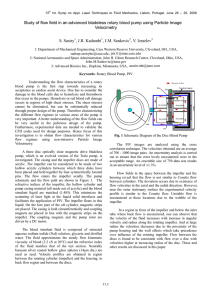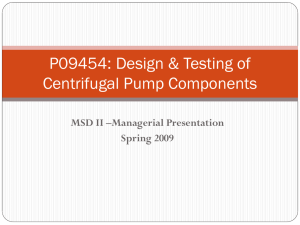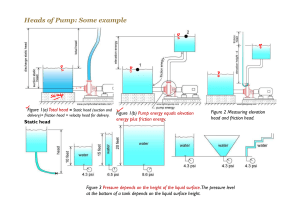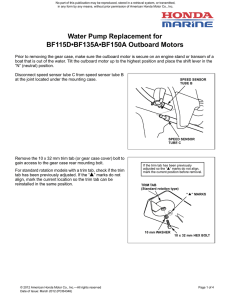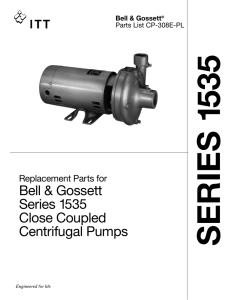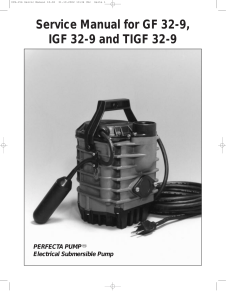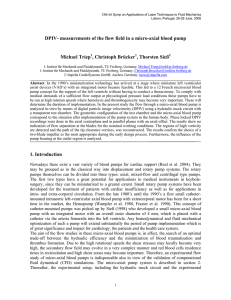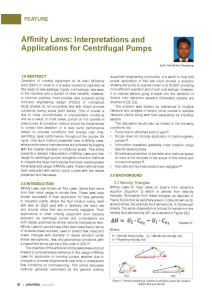DPIV- measurements of the flow field in a micro-axial blood... M. Triep , C. Brücker , T. Sieß
advertisement
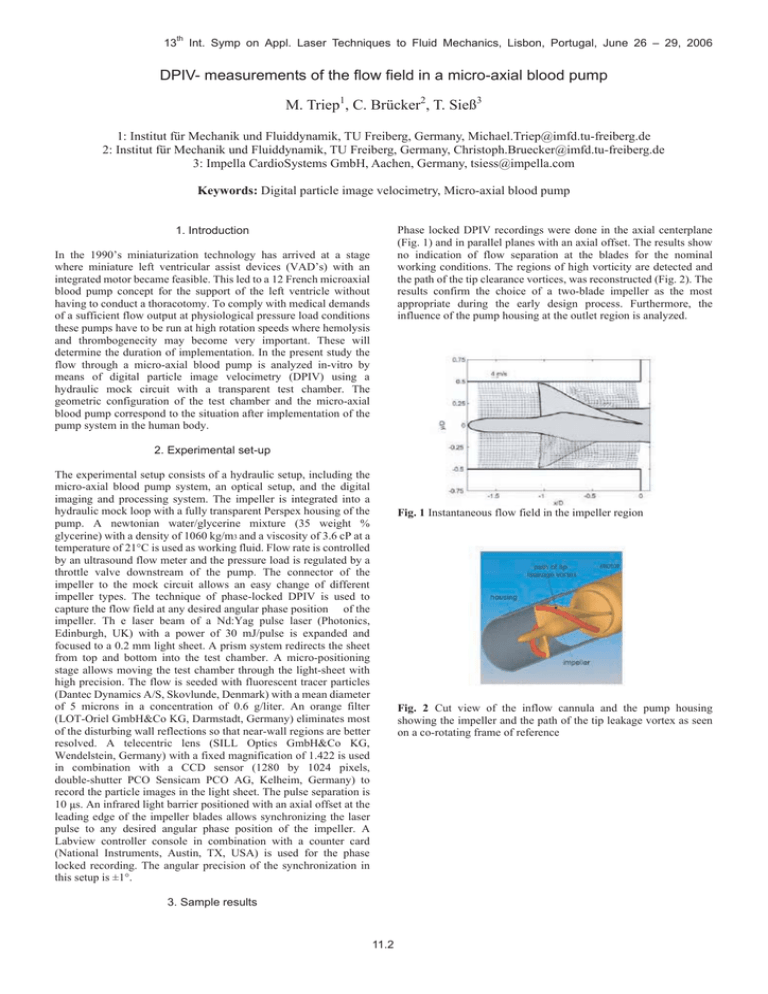
13th Int. Symp on Appl. Laser Techniques to Fluid Mechanics, Lisbon, Portugal, June 26 – 29, 2006 DPIV- measurements of the flow field in a micro-axial blood pump M. Triep1, C. Brücker2, T. Sieß3 1: Institut für Mechanik und Fluiddynamik, TU Freiberg, Germany, Michael.Triep@imfd.tu-freiberg.de 2: Institut für Mechanik und Fluiddynamik, TU Freiberg, Germany, Christoph.Bruecker@imfd.tu-freiberg.de 3: Impella CardioSystems GmbH, Aachen, Germany, tsiess@impella.com Keywords: Digital particle image velocimetry, Micro-axial blood pump Phase locked DPIV recordings were done in the axial centerplane (Fig. 1) and in parallel planes with an axial offset. The results show no indication of flow separation at the blades for the nominal working conditions. The regions of high vorticity are detected and the path of the tip clearance vortices, was reconstructed (Fig. 2). The results confirm the choice of a two-blade impeller as the most appropriate during the early design process. Furthermore, the influence of the pump housing at the outlet region is analyzed. 1. Introduction In the 1990’s miniaturization technology has arrived at a stage where miniature left ventricular assist devices (VAD’s) with an integrated motor became feasible. This led to a 12 French microaxial blood pump concept for the support of the left ventricle without having to conduct a thoracotomy. To comply with medical demands of a sufficient flow output at physiological pressure load conditions these pumps have to be run at high rotation speeds where hemolysis and thrombogenecity may become very important. These will determine the duration of implementation. In the present study the flow through a micro-axial blood pump is analyzed in-vitro by means of digital particle image velocimetry (DPIV) using a hydraulic mock circuit with a transparent test chamber. The geometric configuration of the test chamber and the micro-axial blood pump correspond to the situation after implementation of the pump system in the human body. 2. Experimental set-up The experimental setup consists of a hydraulic setup, including the micro-axial blood pump system, an optical setup, and the digital imaging and processing system. The impeller is integrated into a hydraulic mock loop with a fully transparent Perspex housing of the pump. A newtonian water/glycerine mixture (35 weight % glycerine) with a density of 1060 kg/m3 and a viscosity of 3.6 cP at a temperature of 21°C is used as working fluid. Flow rate is controlled by an ultrasound flow meter and the pressure load is regulated by a throttle valve downstream of the pump. The connector of the impeller to the mock circuit allows an easy change of different impeller types. The technique of phase-locked DPIV is used to capture the flow field at any desired angular phase position of the impeller. Th e laser beam of a Nd:Yag pulse laser (Photonics, Edinburgh, UK) with a power of 30 mJ/pulse is expanded and focused to a 0.2 mm light sheet. A prism system redirects the sheet from top and bottom into the test chamber. A micro-positioning stage allows moving the test chamber through the light-sheet with high precision. The flow is seeded with fluorescent tracer particles (Dantec Dynamics A/S, Skovlunde, Denmark) with a mean diameter of 5 microns in a concentration of 0.6 g/liter. An orange filter (LOT-Oriel GmbH&Co KG, Darmstadt, Germany) eliminates most of the disturbing wall reflections so that near-wall regions are better resolved. A telecentric lens (SILL Optics GmbH&Co KG, Wendelstein, Germany) with a fixed magnification of 1.422 is used in combination with a CCD sensor (1280 by 1024 pixels, double-shutter PCO Sensicam PCO AG, Kelheim, Germany) to record the particle images in the light sheet. The pulse separation is 10 s. An infrared light barrier positioned with an axial offset at the leading edge of the impeller blades allows synchronizing the laser pulse to any desired angular phase position of the impeller. A Labview controller console in combination with a counter card (National Instruments, Austin, TX, USA) is used for the phase locked recording. The angular precision of the synchronization in this setup is ±1°. Fig. 1 Instantaneous flow field in the impeller region Fig. 2 Cut view of the inflow cannula and the pump housing showing the impeller and the path of the tip leakage vortex as seen on a co-rotating frame of reference 3. Sample results 11.2
